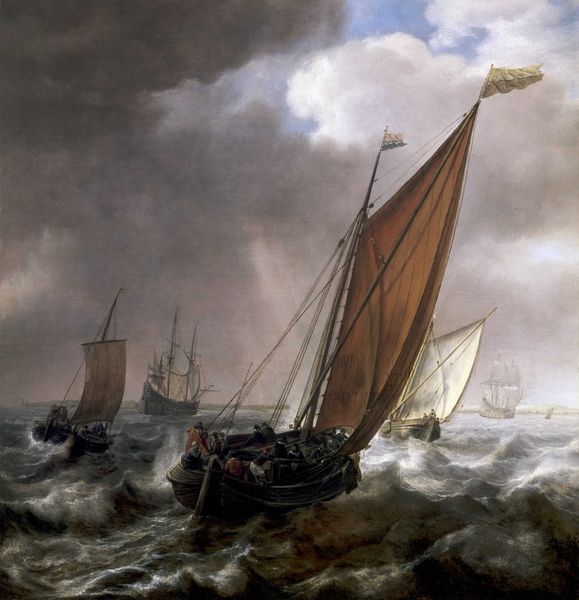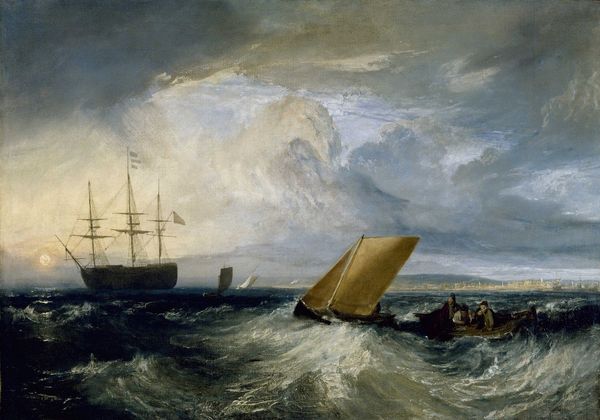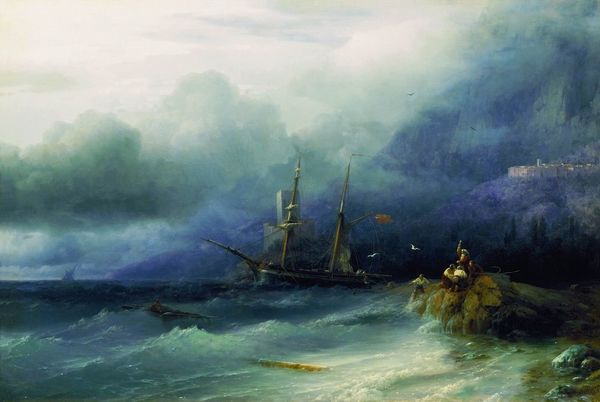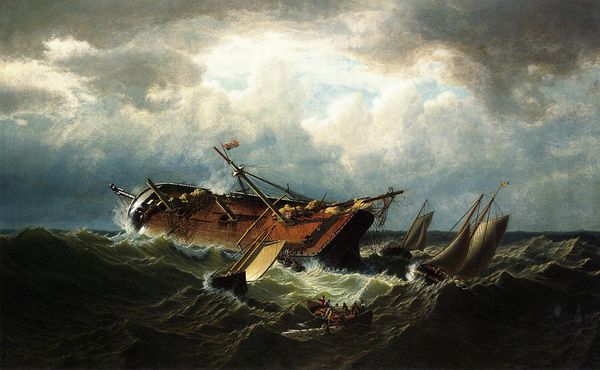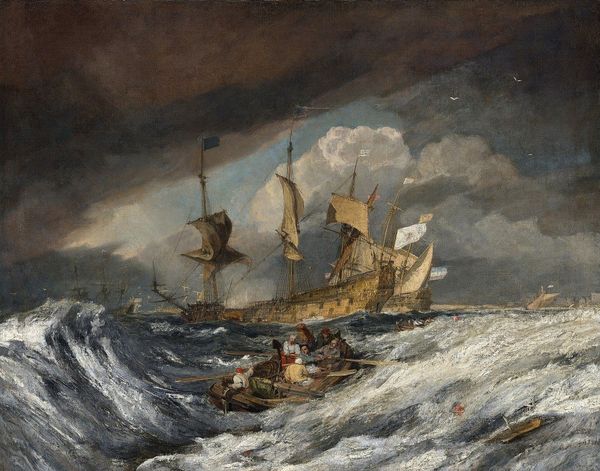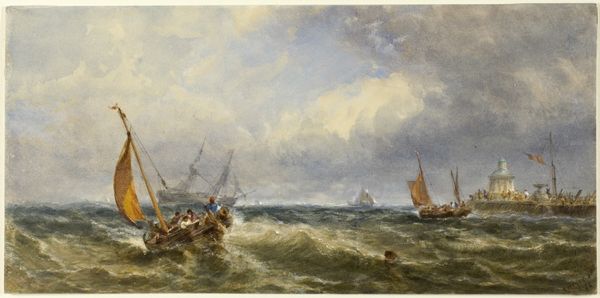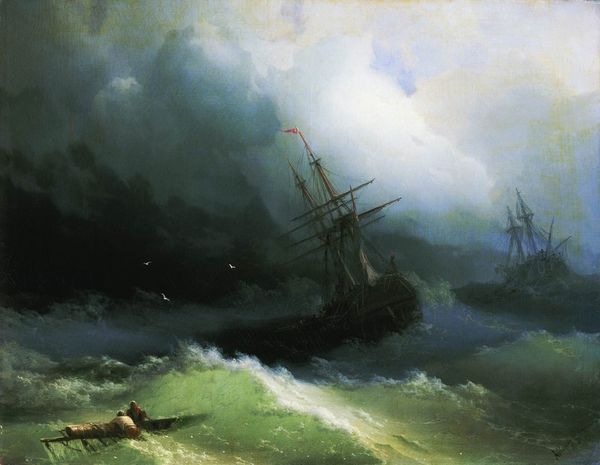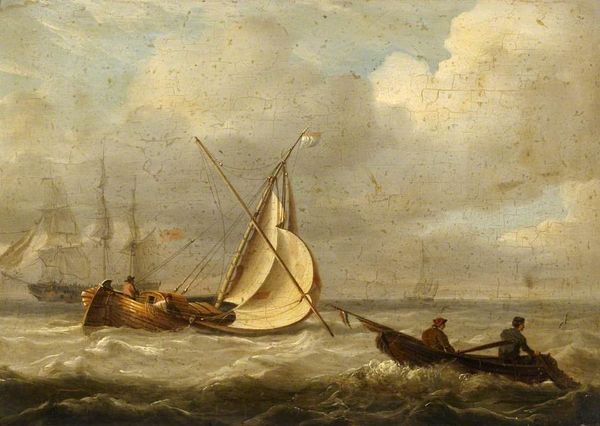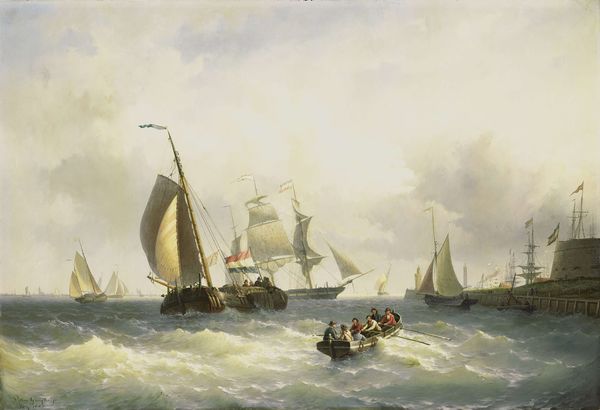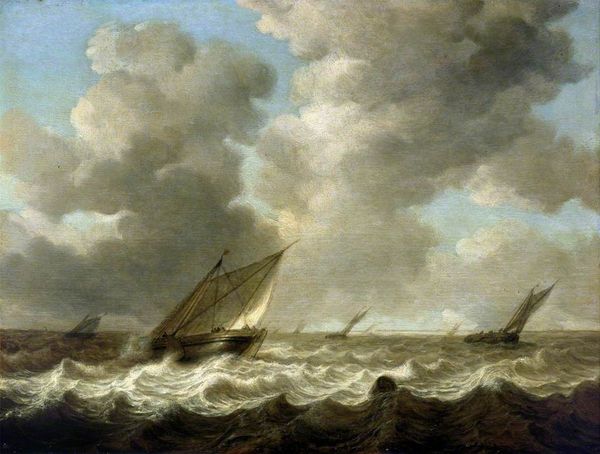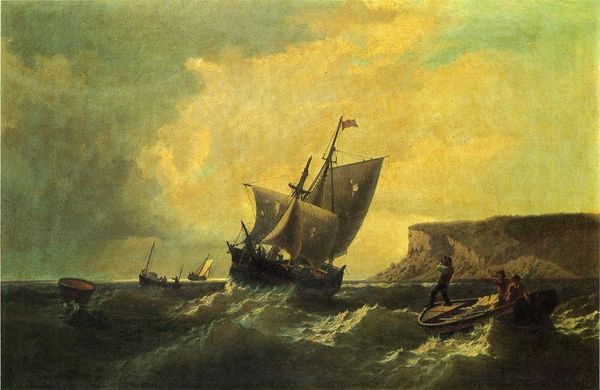
Copyright: Public domain
Curator: It certainly feels turbulent, doesn't it? Almost overwhelming with the movement of the waves. Editor: It does. What we're looking at is "After the Storm on the Coast of Newfoundland," painted by James Hamilton in 1860. It's an oil painting, and the canvas really seems to capture the raw power of the sea. Curator: Absolutely. I’m particularly struck by the materiality of the waves; the way Hamilton renders them, it's as if you can feel the weight and texture of the water. I wonder about his process—did he study the coast directly? The specificity of those cresting waves speaks to careful observation or maybe even photographs used as reference material. Editor: Knowing the history of maritime painting, it makes sense that it draws you into the historical moment as well. Nineteenth-century seascapes often had a moral component, suggesting the unpredictable and dangerous relationship humans have with nature. Given its creation just prior to the American Civil War, this work can be contextualized within the rising industrial production in the north-east and how images of untamed landscapes spoke to national anxieties. Curator: That interplay is fascinating. The labor involved in building and maintaining these ships—often invisible to the art consumer at the time, yet critical to the scene's portrayal. And the way he blends realism with a hint of Romanticism is impressive from a technique and craft perspective. The composition, too—all that dynamism swirling around these boats… Editor: That is correct. And it really encourages us to think about the socio-political dimension. Images of this scale and complexity had a public role to play. They depicted not only a geographical space but a shared experience, maybe a warning as well as an opportunity to contemplate about industrial and labor dynamics. Curator: It certainly speaks to human ingenuity and precariousness simultaneously. It feels like it would take hours upon hours to build the boats pictured, and moments for a sudden change in nature to dismantle that labor. Editor: Reflecting on all of this, I come away thinking about the enduring power of art to weave together seemingly disparate elements of culture, of anxiety and ingenuity. Curator: For me, it reinforces the simple yet profound relationship between human labor, the materials we shape, and the uncontrollable natural forces surrounding us.
Comments
No comments
Be the first to comment and join the conversation on the ultimate creative platform.
